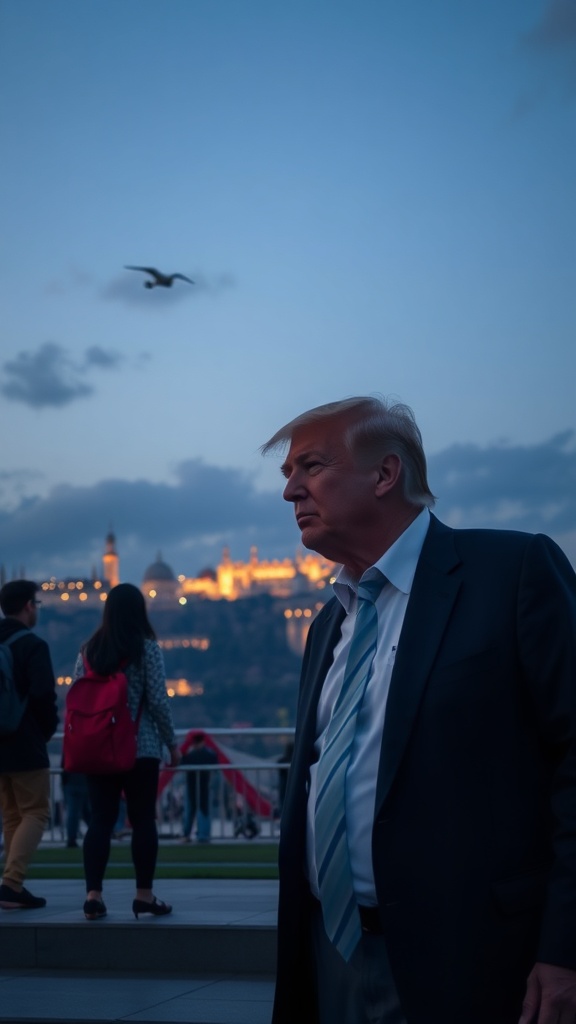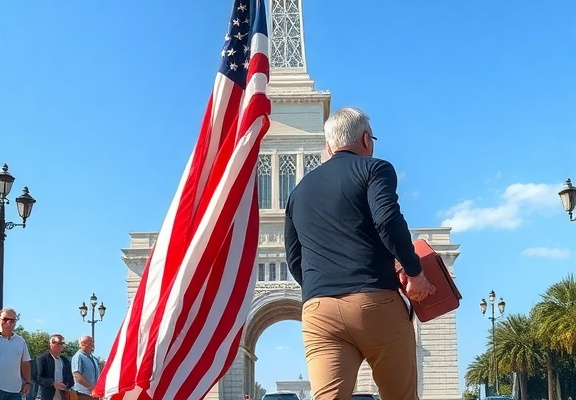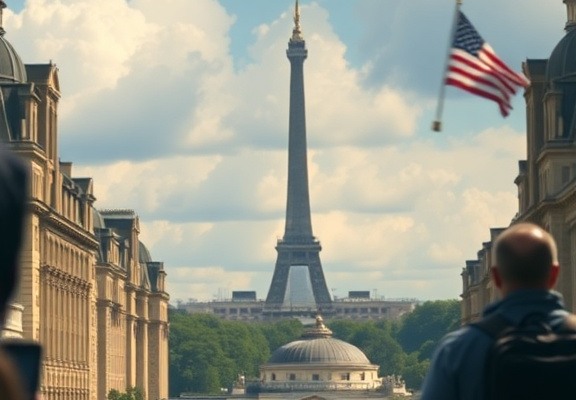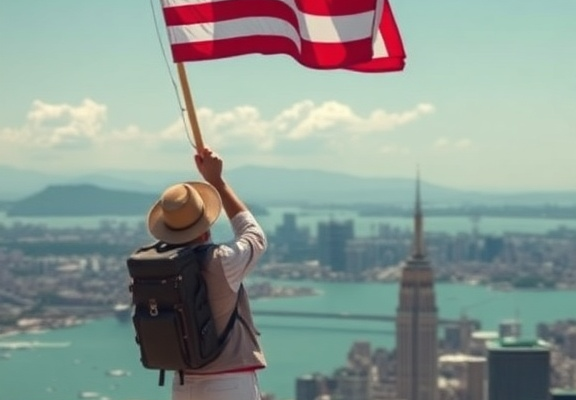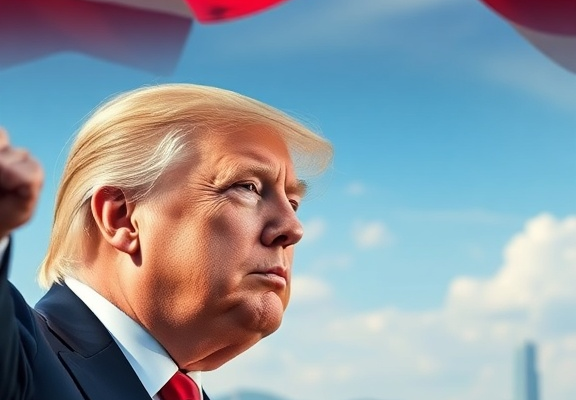The Impact of Trump’s Visa Fee Hike on Tourism Amid a Downturn
The recent increase in visa fees proposed by the Trump administration stands to have a significant impact on tourism in the United States, especially during a time when the industry is already experiencing a downturn. The $250 charge for certain visas has become a point of contention, stirring concerns among travelers and tourism professionals alike.
Thank you for reading this post, don't forget to subscribe!As the world grapples with a multitude of challenges, the tourism sector has felt the pinch. Countries are now seeing a decline in international visitors. With events like the pandemic and global economic uncertainties, people are becoming more cautious about traveling. At such a critical juncture, the introduction of higher visa fees could serve as an additional hurdle for potential visitors.
Many travelers weigh the costs. When planning an international trip, the expenses can pile up quickly. Visa fees, airfare, accommodation, and daily expenses all factor into a traveler’s budget. The $250 hike may not seem monumental to some, but for budget-conscious travelers, it can be a deciding factor in their travel plans. For families or groups, the cost compounds, potentially discouraging trips to the U.S.
Moreover, this fee hike could disproportionately affect certain demographics. Students, for instance, often rely on educational visas to study in the U.S. An increase in fees may deter international students, especially those from countries where education costs and currency fluctuations already pose a financial burden. The potential decline in students could harm the U.S. educational system, which has historically benefited from diverse, international perspectives.
Let’s take a closer look at the implications:
- International Tourist Decline: Visitors from countries that require visas may choose not to travel to the U.S. if the overall costs increase significantly.
- Economic Impact: A reduction in tourism can affect local economies that thrive on visitor spending, from hotels and restaurants to museums and attractions.
- Global Perception: The increase in visa fees might also alter how the U.S. is perceived in the global travel market. Countries with more inviting visa policies could become more attractive to tourists.
- Business Travelers: For business travelers, higher costs may lead companies to reconsider their operations within the U.S. or limit employee travel, affecting collaborations and business development.
The timing of this visa fee hike raises further questions. As the tourism sector gradually recovers from its downturn, moving to impose additional fees may appear counterintuitive. Rather than encouraging travel and fostering relationships, it could lead to a more isolationist stance, one that may ultimately hurt U.S. interests in the long run.
It’s essential to consider the competitive landscape. Many countries are currently working to attract tourists by easing visa requirements or reducing costs. Other nations are offering streamlined processes that entice travelers. If the U.S. continues to raise its barriers, visitors may gravitate toward regions where their travel experience involves fewer complications.
Additionally, the tourism industry’s ripple effect cannot be ignored. A decrease in international visitors can also lead to job losses in hospitality sectors. Those working in hotels, restaurants, and travel agencies depend on a steady influx of tourists. The visa fee hike could threaten livelihoods of many individuals who rely on tourism for their income.
It’s also vital to address how these changes are communicated to the public. Clear, transparent communication from government agencies can help alleviate some concerns about the visa fee hikes. Ensuring that potential visitors understand the reasoning behind these changes is crucial if the administration hopes to mitigate any backlash from the tourism sector.
Moreover, tourism stakeholders, including industry leaders and local governments, need to advocate for more traveler-friendly policies. Collaborating with lawmakers to address and potentially reverse these fee increases could help revitalize the tourism landscape in the U.S.
In the end, the clash between the visa fee hike and a dwindling tourism sector presents a complex challenge. The interaction of these policies will ultimately shape the future of travel to the United States. Moving forward, finding a balance between security measures and promoting tourism will be essential for both economic recovery and fostering global connections.
Strategies for Increasing Travel Demand During Economic Challenges
Economic challenges can put a damper on travel demand, but savvy strategies can help boost the number of travelers exploring new destinations. Understanding what motivates travelers during tough financial times is key. Here are several strategies to consider that can make travel more appealing even when budgets are tight.
Offer Value-Driven Packages
In uncertain economic climates, highlighting value becomes paramount. Travelers want to know their money is being well spent. Consider the following approaches:
- Bundled Deals: Create packages that include flights, accommodations, and activities at a discounted rate. This gives travelers a sense of getting more for their money.
- Flexible Booking Options: Provide cancellations or changes without hefty fees. This reassurance might entice hesitant travelers.
- Free Add-Ons: Include complimentary services like breakfast or airport transfers to make the overall experience more attractive.
Enhance Marketing Efforts
Boosting travel demand requires robust marketing. Engage potential travelers and inspire them to make bookings by:
- Storytelling: Use compelling narratives in your marketing to transport potential travelers to the destination. Show them experiences rather than just sights.
- Social Media Engagement: Leverage platforms like Instagram and Facebook to connect with your audience. User-generated content can extend your reach and authenticity.
- Targeted Advertising: Use data analytics to identify and target specific demographics that are still willing to travel, tailoring your messages to meet their interests.
Focus on Domestic Tourism
When international travel is uncertain or expensive, people often turn to their own backyards. Promote local tourism by:
- Staycations: Highlight experiences within the local area. This can appeal to families seeking a fun getaway without straying far from home.
- Local Culture: Showcase unique cultural events, food festivals, and attractions that travelers might overlook in their immediate vicinity.
Leverage Technology
In an increasingly digital world, embracing technology can enhance the travel experience and draw in customers. Here are some ways technology can help:
- Mobile Apps: Develop apps that facilitate easy booking and provide useful travel tips or itineraries. Convenience can greatly influence travel decisions.
- Virtual Tours: Offer virtual experiences and sneak peeks of destinations to inspire future bookings. Seeing sights through a screen can stir curiosity.
Implement Incentives and Loyalty Programs
When budgets tighten, incentives can sway travelers. Enhance customer retention and attract new clients by:
- Loyalty Rewards: Introduce loyalty programs offering discounts or perks to frequent travelers. This can encourage repeat business and word-of-mouth recommendations.
- Seasonal Promotions: Run short-term promotions that create urgency, like discounts for off-peak travel, to encourage spontaneous bookings.
Create Positive Travel Narratives
During economic downturns, safety and reassurance are paramount. Create a positive travel narrative by:
- Emphasizing Safety Measures: Clearly communicate the safety and health measures taken by your organization. Build traveler confidence in their choice to travel.
- Highlighting Unique Experiences: Focus on experiences that transcend ordinary trips, like wellness retreats or adventure travel, which can attract those craving unique escapes.
Even during challenging economic times, there are numerous strategies to increase travel demand. Providing attractive value, making use of technology, enhancing marketing efforts, and creating an enticing travel narrative can all play significant roles in encouraging travelers to embark on their journeys. Be proactive in addressing the needs of potential travelers, and adapt to the evolving market conditions to successfully foster tourism growth.
Conclusion
As the tourism industry grapples with the effects of Trump’s visa fee hike amidst a downturn, it is clear that a delicate balance is required to navigate these choppy waters. The increase of $250 in visa fees has raised concerns among potential travelers, particularly in an economic landscape already burdened by uncertainties. This policy could deter visitors, impacting revenue for businesses that rely heavily on tourism.
To counteract these challenges, stakeholders in the travel sector must adopt innovative strategies to boost travel demand. This could involve the promotion of more affordable travel packages, targeted marketing campaigns to emphasize the unique experiences awaiting tourists, and partnerships with airlines and hotels to offer incentives. Emphasizing the value and rich cultural experiences that the United States has to offer will be crucial.
Moreover, efforts to streamline the visa application process can greatly enhance the traveler experience. Clear communication about the benefits of visiting the U.S., despite the fee hike, can help convert interest into action. By creating a welcoming atmosphere and showcasing the diverse attractions available, the industry can reposition itself to attract more visitors, even amid rising costs.
Ultimately, the interplay of policy and economic factors requires a proactive approach from all involved in the travel sector. Embracing flexibility and creativity in marketing strategies will be essential to not just survive this downturn but to thrive and rejuvenate the tourism landscape. Engaging with potential travelers on a deeper level, addressing their concerns, and highlighting the enriching experiences the U.S. offers can help to bridge the gap created by these changes in visa policy.

